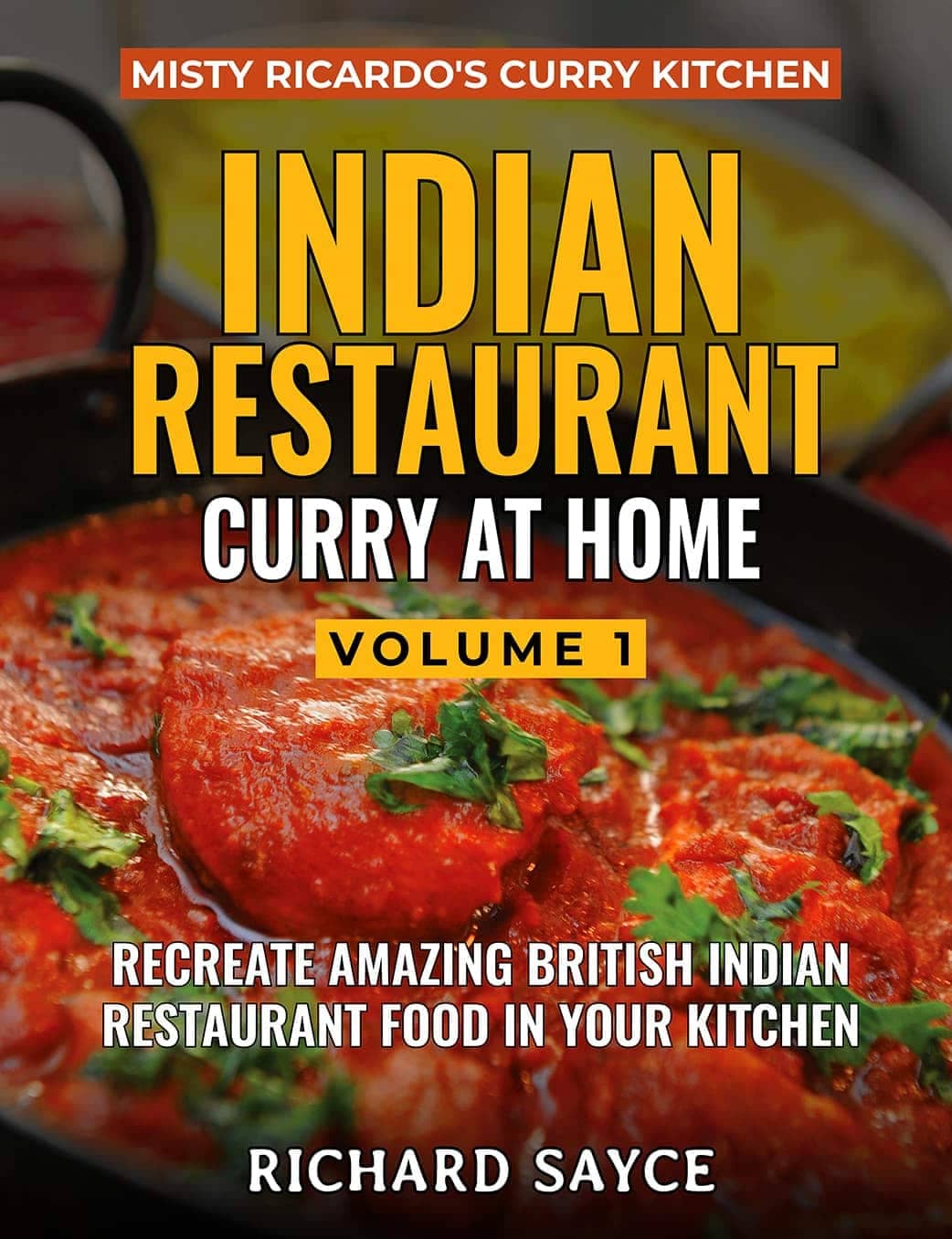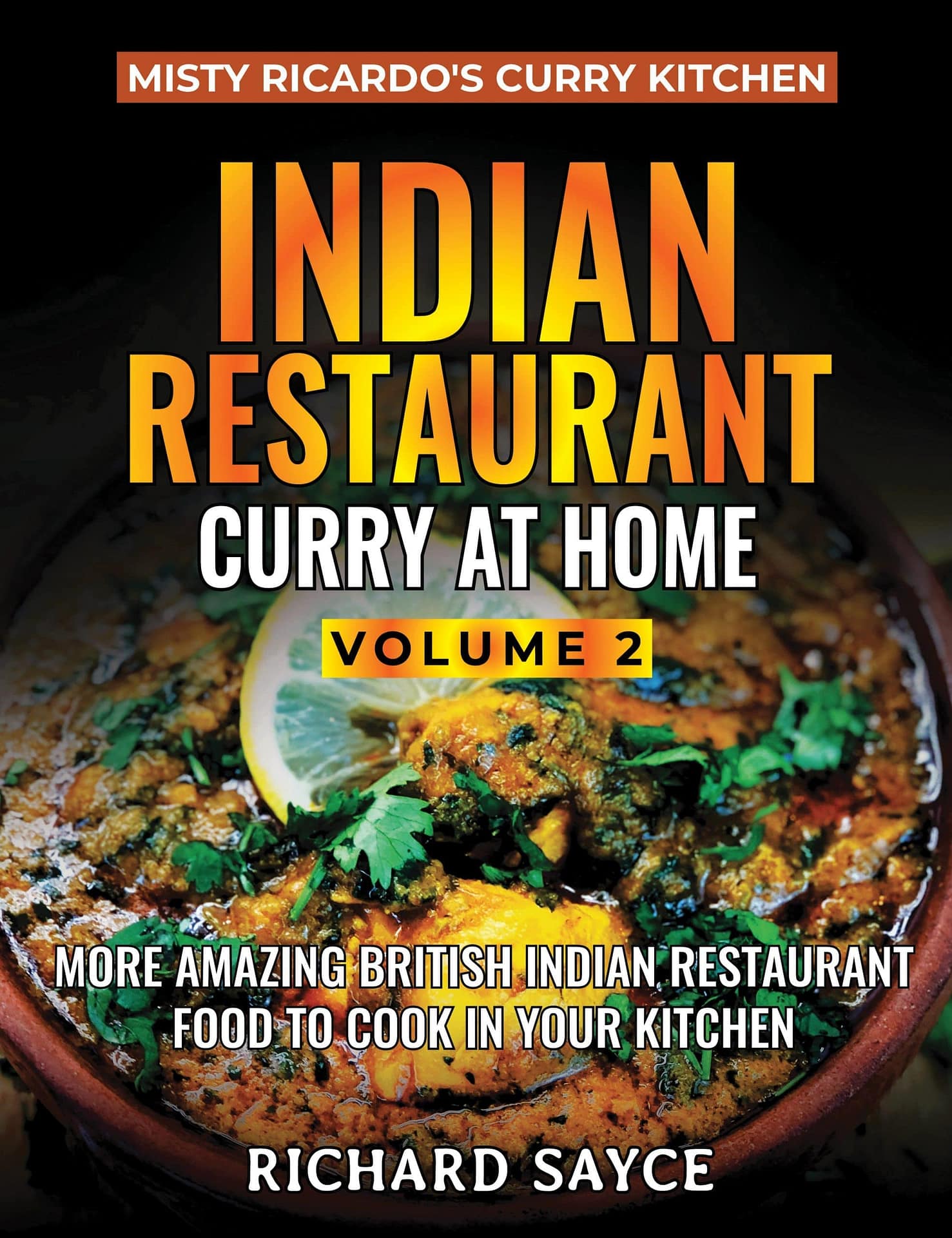Pathia Curry Recipe (BIR):
A hot, sweet and sour tomato-based curry. Lemon juice and tamarind provide the sourness, which is balanced by the sweetness of mango chutney and jaggery/brown sugar. Seafood or chicken are great as the main ingredients in a pathia curry, but any other main ingredient can be used instead.
Serves 1-2 people. Scroll down for the video.
You can also find this Pathia curry recipe in my cookbooks CURRY COMPENDIUM and INDIAN RESTAURANT CURRY AT HOME VOLUME 1. All my books are available in both physical and kindle formats.
INGREDIENTS
- 4 TBSP (60ml) Oil
- 10cm Cassia Bark
- 1 Tej Patta (Asian Bay Leaf) – optional
- 60-80g Onion, very finely chopped
- 2 tsp Ginger/Garlic paste
- 1 tsp Chilli Powder
- 1 tsp Kashmiri Chilli Powder (mild). Alternatively use a regular chilli powder to your taste.
- 1½ tsp Mix Powder
- ¼ tsp Smoked Paprika
- ¼-½ Salt
- 5-6 TBSP Tomato Paste
SPACEHOLDER
- 1 tsp Kasuri Methi
- 1 TBSP each of fresh Coriander Stalks and Leaves (finely chopped)
- 330ml+ Base Gravy
- Prawns or pre-cooked Chicken/Lamb/Beef, etc.
- 1½ tsp Mango Chutney
- 1½ tsp Jaggery or Brown Sugar
- 1½ tsp Lemon Juice, freshly squeezed
- 2 tsp Tamarind Sauce or ½ tsp Tamarind Concentrate
- A few splashes of Worcestershire Sauce
METHOD
- Add the oil to a frying pan on medium high heat.
- When hot, add the tej patta and cassia bark. Fry for 30-45 seconds while stirring to infuse the oil with flavour.
- Add the onion and fry for a further 1-2 minutes until the onion is translucent and starting to brown on the edges.
- Next, add the ginger/garlic paste. Stir until starting to brown and the sizzling sound reduces, which indicates most of the water content has evaporated.
- Add the kasuri methi, mix powder, chilli powder, Kashmiri chilli powder, smoked paprika and salt.
- Fry for 20-30 seconds, initially adding 30ml base gravy to help prevent burning. Stir diligently, and use the bottom of your spoon to ensure flat and even distribution.
- Turn up the heat to high and add the tomato paste. Stir diligently until the oil separates and small craters appear around the edges.
- Then, add the pre-cooked chicken/lamb/beef, etc., and the coriander stalks. Mix well into the sauce to coat the meat. If using prawns, either raw or cooked, wait until a later stage (see below).
- Add 75ml of base gravy, stir into the sauce, and leave unstirred on high heat for 30-45 seconds, or until the sauce has reduced a little with small craters forming around the edges of the frying pan.
- Add a second 75ml of base gravy, stirring and scraping the bottom and sides of the pan once when first added. Allow the sauce to reduce again.
- Now add 150ml of base gravy, the mango chutney, jaggery/brown sugar, tamarind, lemon juice and a few splashes of Worcestershire sauce. Stir and scrape once when first added.
SPACEHOLDER
- Leave to cook on high heat for about 4-5 minutes, or until the desired consistency has been reached (medium thickness) and the oil has separated again. Add extra base gravy if desired to thin the sauce out. Avoid stirring/scraping unless the curry is showing signs of imminently burning. Let the sauce caramelise on the sides and base of the pan for that all-important flavour.
- If you are using prawns add them a couple of minutes before the anticipated end of cooking. Make sure they are well coated in sauce to help stop them drying out and becoming tough. The prawns will release a little juice when they are cooking which will affect the final consistency.
- Add the fresh coriander leaves 30 seconds before the end of cooking.
- Taste and adjust with salt, or any of the sweet and sour ingredients as desired.
- Remove the cassia bark and tej patta, and spoon off any excess oil from the top of the curry if you want to be health conscious.
- Serve, sprinkled with fresh coriander.
NOTES
- All spoon measurements are level (1 tsp = 5ml, 1 TBSP = 15ml).
- The sourness of tamarind varies between the different forms available, so be careful not to overdo it. Remember the adage “You can add but you can’t take away”. It may take some practice to get the sweet and sour balance that you prefer.
- Be careful with the smoked paprika. Some brands are overpowering.
- Enjoy this Pathia curry recipe, and please visit the Misty Ricardo’s Curry Kitchen YouTube Channel for lots of Indian recipes.







0 Comments